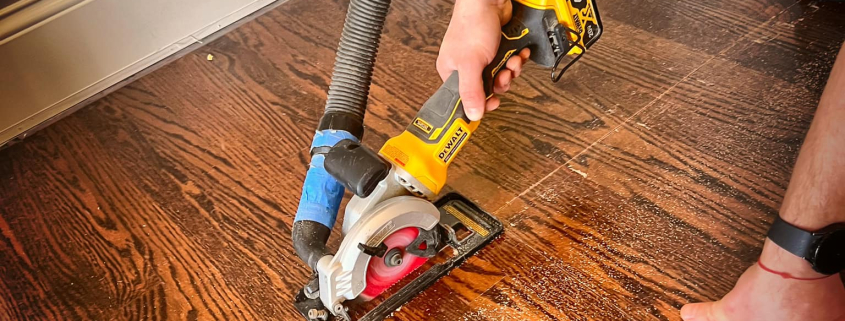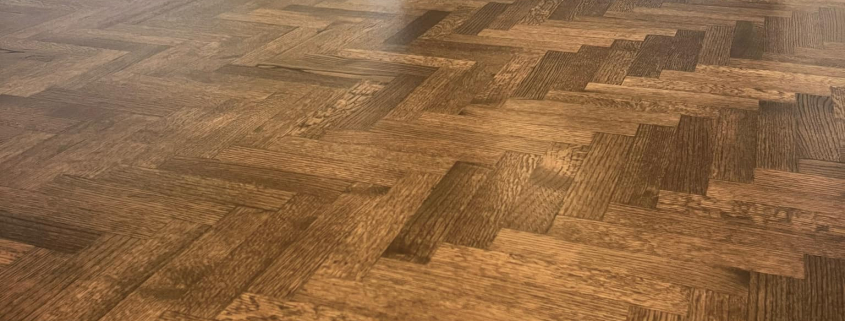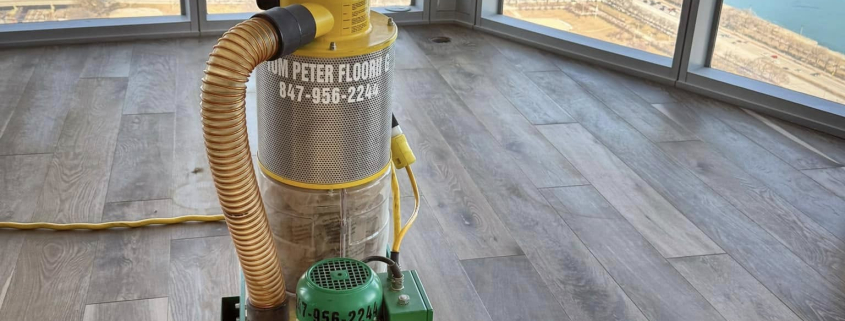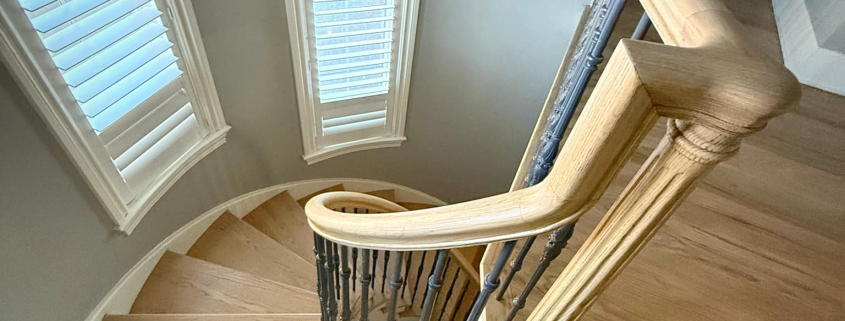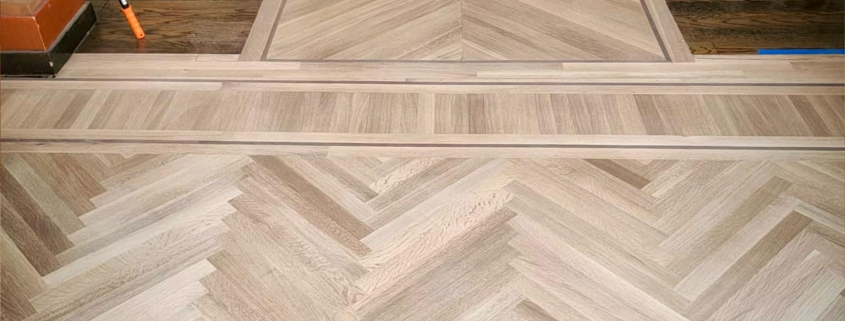When your hardwood floors start to look worn, scratched, or dated, you might find yourself asking a big question: Should I refinish or replace my floors?
At first glance, a brand-new floor might sound appealing—but refinishing your existing hardwood could offer the same visual transformation at a fraction of the cost. Let’s break down the key differences between the two options to help you make the smartest decision for your home and budget.
1. The Cost Factor
Refinishing:
Refinishing hardwood floors is significantly more cost-effective. Depending on the condition of your floors and the size of your space, refinishing typically costs 50–70% less than full replacement. You’ll avoid material costs and reduce labor fees, all while getting that “brand new” look.
Replacing:
Replacing floors includes not only new hardwood materials but also the removal of old flooring, subfloor repairs (if needed), installation, staining, and finishing. It adds up quickly and often comes with more unexpected costs.
👉 Winner: Refinishing — hands down, it’s the budget-friendly choice.
2. Time & Disruption
Refinishing:
Most refinishing jobs are completed in 3–5 days, depending on the size and whether you opt for custom staining. Plus, modern dustless sanding options keep your home cleaner and safer throughout the process.
Replacing:
Full replacement can take a week or more, especially if subfloor work is needed or if you’re using special-order wood. It’s a bigger disruption to your daily life.
👉 Winner: Refinishing — less mess, less stress, and faster turnaround.
3. Environmental Impact
Refinishing:
Preserving your existing floors is a sustainable choice. You’re minimizing waste and making the most of the materials already in your home.
Replacing:
Even responsibly sourced hardwood still requires harvesting, shipping, and installation. Plus, your old flooring may end up in a landfill.
👉 Winner: Refinishing — it’s the greener solution.
4. Visual Impact
Many homeowners are surprised by how dramatic the transformation can be after refinishing. You can:
-
Change the color and tone of your floors
-
Remove deep scratches and dull finishes
-
Highlight the natural grain and character of your wood
In most cases, unless your flooring is severely damaged or too thin to sand, refinishing can give you the exact look you want—without a full replacement.
So, When Should You Replace Instead?
While refinishing is the ideal solution for many, here are a few cases when replacing may be necessary:
-
Your floors are warped, water-damaged, or structurally compromised.
-
The hardwood has been refinished too many times and is too thin.
-
You want to switch materials entirely, like going from oak to walnut or hardwood to luxury vinyl.
Let’s Talk About Your Floors
At Tom & Peter Flooring, we’ve helped homeowners throughout Chicago area make the best decision for their floors—whether that means restoring what they already have or helping them start fresh. As a local, family-owned business, we take pride in offering honest advice, transparent pricing, and beautiful results every time.
Need help deciding? Contact us today for a free consultation and let us help you choose the right path to floors that look brand new—without breaking the bank.
Choosing the right flooring for your home is an important decision, especially when you have furry family members. Pets bring joy, companionship, and, let’s be honest—some messes! That’s why it’s crucial to select flooring that can withstand their claws, accidents, and playful energy while still looking beautiful.
What to Look for in Pet-Friendly Flooring
When selecting flooring for a pet-friendly home, consider these key factors:
✔ Scratch Resistance – Durable surfaces that can withstand pet nails and energetic playtime.
✔ Water Resistance – Protection against accidents, spills, and pet water bowls.
✔ Comfort & Traction – Flooring that’s comfortable for paws and helps prevent slips.
✔ Ease of Cleaning – Low-maintenance materials that resist stains and odors.
Top Flooring Options for Pet Owners
1. Luxury Vinyl Flooring – Durable, Waterproof, and Stylish
Luxury vinyl is one of the best choices for pet-friendly homes. It mimics the look of hardwood or stone while offering superior scratch and water resistance. Plus, it’s easy to clean and comfortable underfoot for both you and your pets.
2. Tile Flooring – Ultimate Water and Scratch Resistance
Porcelain or ceramic tile is an excellent option if you’re looking for flooring that can handle anything. It’s nearly impervious to scratches, water, and stains—making it great for homes with large or active pets.
3. Engineered Hardwood – A Pet-Friendly Alternative to Solid Wood
While traditional hardwood can scratch easily, engineered hardwood offers a more durable option. Choosing a harder wood species and a strong protective finish can help minimize damage from pet nails.
4. Laminate Flooring – Scratch-Resistant and Budget-Friendly
Laminate flooring is tough against scratches and provides a stylish look at a more affordable price. Look for textured laminate options to help pets maintain traction and avoid slipping.
5. Carpet Tiles – Cozy and Replaceable
If you love the warmth of carpet but worry about stains, carpet tiles are a smart solution. They provide softness for pets while allowing you to replace individual tiles in case of accidents.
Flooring Options to Avoid
❌ Softwood Flooring – Woods like pine or fir scratch easily.
❌ Glossy Surfaces – Can be slippery for pets.
❌ Traditional Carpet – Absorbs odors, stains, and pet hair.
Upgrade Your Floors for a Pet-Friendly Home!
Whether you have playful pups or curious cats, choosing the right flooring can make life easier while keeping your home stylish. If you’re ready to upgrade to pet-friendly floors, Tom and Peter Flooring can help! Contact us today to explore the best options for you and your furry friends.
The Science Behind Wood Expansion: Why Acclimating Your Hardwood Matters
Why Does Hardwood Expand and Contract?
Wood is a natural material that reacts to its environment. It absorbs moisture when humidity is high and releases it when humidity drops. This causes hardwood flooring to expand and contract. If not properly acclimated before installation, the wood may shrink or swell, leading to gaps, cupping, or warping over time.
The Importance of Acclimating Hardwood Floors
Acclimating hardwood means allowing the wood to adjust to the temperature and humidity of your home before installation. This step is crucial in Elk Grove Village and the Chicagoland area, where seasonal humidity fluctuations can be extreme.
Skipping this process can lead to:
• Gapping: Wood shrinks in dry conditions, creating noticeable gaps.
• Cupping: Wood absorbs excess moisture, causing the edges of planks to rise.
• Buckling: Severe expansion may cause wood to lift from the subfloor.
How Long Should Hardwood Acclimate?
At Tom & Peter Flooring, we recommend acclimating your hardwood for at least 3–7 days before installation. The exact time depends on the wood species and the climate conditions in your home.
The Right Way to Acclimate Hardwood Flooring
1. Store Inside – Keep the flooring in the room where it will be installed. Never leave it in garages or basements.
2. Stack Properly – Open the boxes and spread out the planks for better air circulation.
3. Check Humidity Levels – The indoor humidity should be between 30%–50% for best results.
4. Monitor Moisture Content – Professional installers will use a moisture meter to ensure the wood is ready.
Professional Installation Matters
Hardwood flooring is a long-term investment, and proper acclimation is key to its durability. Tom & Peter Flooring has over 20 years of experience installing and refinishing hardwood floors in Elk Grove Village and beyond. We ensure your flooring is acclimated and installed correctly for long-lasting beauty and performance.
As we step into 2025, the Chicago area is buzzing with exciting developments in interior design, particularly in flooring.
Homeowners and designers alike are increasingly seeking innovative, sustainable, and aesthetically pleasing flooring options that reflect their personal styles and the evolving trends in the market.
Let’s dive into some of the most notable flooring trends expected to dominate the Chicago area in 2025.
1. **Sustainable and Eco-Friendly Materials** Sustainability continues to be a key focus for homeowners in Chicago. Eco-friendly flooring options made from recycled materials, such as reclaimed wood and bamboo, are on the rise. These materials not only reduce environmental impact but also add a unique charm to homes. Additionally, manufacturers are exploring new sustainable options, such as cork and linoleum, which are both durable and biodegradable.
2. **Luxury Vinyl Flooring (LVF)** Luxury vinyl flooring remains a popular choice due to its versatility and affordability. In 2025, expect to see even more advanced designs that mimic the look of hardwood, stone, and tile while offering superior durability and ease of maintenance. With innovations in technology, luxury vinyl is now available in a variety of textures and patterns, making it an excellent choice for homeowners looking for style without sacrificing practicality.
3. **Bold Colors and Patterns** Gone are the days of muted, neutral tones dominating flooring choices. In 2025, homeowners in Chicago are embracing bold colors and intricate patterns that make a statement. From vibrant blues and greens to geometric designs, these eye-catching options can serve as a focal point in any room, allowing homeowners to express their individuality and creative flair.
4. **Textured Surfaces** Texture is becoming increasingly important in flooring design. Homeowners are gravitating towards textured surfaces that add depth and interest to their spaces. This trend includes everything from hand-scraped hardwood to plush carpets with intricate pile patterns. Textured flooring not only enhances visual appeal but also creates a tactile experience that can make a space feel more inviting.
5. **Engineered Hardwood** As the demand for hardwood flooring continues, engineered hardwood is gaining traction due to its stability and adaptability in varying climates. This option offers the beauty of natural wood while being less prone to warping and moisture damage, making it ideal for the Chicago area’s diverse weather conditions. With a wide range of finishes and styles, engineered hardwood is a go-to choice for many homeowners.
6. **Indoor-Outdoor Living Spaces** The trend of merging indoor and outdoor living continues to influence flooring choices. Homeowners are opting for materials that can seamlessly transition from inside to outside, such as tile or composite decking. This trend encourages a more integrated lifestyle, allowing residents to enjoy the beauty of nature while maintaining a cohesive aesthetic throughout their homes.
7. **Smart Flooring Technology** As technology advances, so does the flooring industry. Smart flooring solutions, such as heated tiles and sound-absorbing materials, are becoming more accessible. These innovations not only enhance comfort but also improve energy efficiency, making them appealing to eco-conscious homeowners.
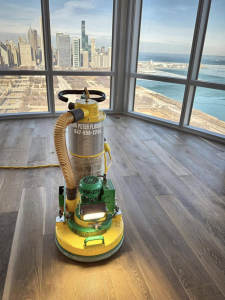
The flooring trends emerging in the Chicago area for 2025 reflect a commitment to sustainability, individuality, and innovation. Whether you are renovating your home or building from scratch, keeping an eye on these trends can help you make informed decisions that enhance both the beauty and functionality of your living spaces. With a plethora of options available, there’s something to suit every taste and lifestyle, ensuring that Chicago homes remain stylish and contemporary for years to come.
Contact Tom & Peter Flooring today for a free estimate on your flooring project.
Innovative Flooring Technologies: What’s New in the Industry?
In the ever-evolving world of flooring, technological advancements are reshaping how we think about installation, maintenance, and design. As a flooring contractor, it’s essential to stay updated on the latest innovations that not only enhance the aesthetics of a space but also improve functionality and durability.
Here’s a look at some exciting flooring technologies making waves in the industry today.
1. **Moisture-Resistant Flooring** One of the most significant advancements in flooring technology is the development of moisture-resistant materials. Traditional hardwood and laminate floors can be easily damaged by moisture, leading to warping and mold growth. However, new innovations in engineered hardwood and luxury vinyl planks (LVP) offer superior moisture resistance, making them ideal for areas like kitchens, bathrooms, and basements. These materials are designed to withstand spills and humidity, providing homeowners with peace of mind without sacrificing style.
2. **Smart Flooring Solutions** The rise of smart home technology has also influenced the flooring industry. Smart flooring options now allow homeowners to monitor and control various aspects of their flooring through integrated technology. For example, some products come with built-in sensors that can detect moisture levels, temperature changes, and even foot traffic. This data can help homeowners maintain optimal conditions and promptly address potential issues, such as leaks or irregular wear.
3. **Sustainable Flooring Materials** As environmental awareness grows, so does the demand for sustainable flooring materials. Innovations in this area include the use of recycled materials, such as reclaimed wood and recycled rubber, which not only reduce waste but also offer unique aesthetic qualities. Additionally, manufacturers are now producing flooring options with low volatile organic compounds (VOCs), ensuring healthier indoor air quality. Sustainable choices like bamboo and cork are also gaining popularity due to their renewability and durability.
4. **Advanced Installation Techniques** With the advent of new installation technologies, flooring contractors can now offer faster and more efficient services. Click-lock flooring systems, for instance, have simplified the installation process by allowing planks to snap together without the need for glue or nails. This not only speeds up the installation time but also makes it easier for homeowners to install flooring themselves if they choose to do so. Additionally, advancements in underlayment materials provide better soundproofing and insulation, enhancing the overall performance of flooring.
5. **3D Printing in Flooring Design** 3D printing technology is making its mark in the flooring industry by allowing for customized designs and patterns that were once impossible to achieve. With 3D printing, manufacturers can create intricate textures and shapes that enhance the visual appeal of flooring. This innovation opens up endless possibilities for personalization, enabling homeowners to design unique flooring that reflects their style and preferences.
6. **Self-Healing Flooring** A groundbreaking development in flooring technology is the emergence of self-healing materials. These innovative products can repair minor scratches and dents on their own, maintaining their appearance over time. Whether it’s through the use of special polymers or coatings that react to damage, self-healing flooring promises to reduce maintenance efforts and prolong the life of the floor.
Staying informed about the latest flooring technologies not only helps contractors provide better service but also empowers homeowners to make informed decisions about their flooring choices. As innovations continue to shape the industry, embracing these advancements can lead to enhanced durability, sustainability, and style in flooring solutions. Whether you’re planning a renovation or simply looking to upgrade your home, consider exploring these cutting-edge options for a more functional and aesthetically pleasing space.
By keeping an eye on emerging trends and technologies, flooring contractors can ensure they remain competitive in a fast-paced market while delivering exceptional value to their clients.
At Tom and Peter Flooring, we understand that choosing the right flooring for your home is a significant decision.
Once you’ve selected beautiful hardwood floors, the next big question arises: should you install them yourself or hire a professional? Both options come with their own set of advantages and disadvantages. In this post, we’ll explore the pros and cons of DIY installation versus professional services to help you make an informed choice.
DIY Installation: The Pros and Cons
Pros:
1. Cost Savings: One of the most appealing aspects of DIY installation is the potential to save money. Without labor costs, you can allocate your budget towards higher-quality materials or additional home improvements.
2. Personal Satisfaction: There’s a sense of accomplishment that comes from completing a project yourself. If you enjoy hands-on work and have the time to dedicate, installing your own hardwood floors can be a rewarding experience.
3. Flexible Schedule: DIY allows you to work at your own pace. You can choose when to start and stop, fitting the project into your schedule without the need to coordinate with a contractor.
Cons:
1. Time-Consuming: Installing hardwood floors is a labor-intensive process that requires careful attention to detail. For those unfamiliar with the techniques, it can take significantly longer than anticipated.
2. Skill Level: Without prior experience, you may encounter challenges that can lead to mistakes. These errors can affect the overall appearance and longevity of your flooring.
3. Limited Access to Tools: Professional installers have specialized tools and equipment that may not be readily available to the average homeowner. This can make certain aspects of the installation process more difficult.
Professional Installation: The Pros and Cons
Pros:
1. Expertise and Experience: Professional installers, like those at Tom and Peter Flooring, have the training and experience necessary to handle various flooring types and installation methods. Their expertise can ensure a flawless finish.
2. Time Efficiency: Professionals can complete the job much faster than most DIYers. This means less disruption to your daily life and a quicker turnaround for enjoying your new floors.
3. Quality Assurance: With professional installation, you can be confident that the job will be done right. Many contractors offer warranties on their work, providing peace of mind for your investment.
Cons:
1. Higher Cost: Hiring professionals does come with a price tag. While the upfront cost may be higher, it’s essential to consider the value of expertise and the potential for long-term savings through quality work.
2. Less Control Over the Process: When you hire a professional, you may have less direct control over the installation timeline and methods. However, good contractors will work with you to accommodate your preferences.
3. Scheduling Conflicts: Finding a time that works for both you and the contractor can sometimes be challenging, especially during peak seasons.
When to Hire a Pro While some homeowners may feel confident tackling a DIY project, there are specific situations where hiring a professional is the better choice:
Complex Layouts: If your space has a lot of angles, transitions, or requires intricate patterns, it’s best to leave it to the experts.
Limited Experience: If you’ve never installed flooring before, the learning curve can be steep. Professionals can save you time and avoid costly mistakes.
Time Constraints: If you’re on a tight schedule or need the flooring completed quickly, hiring professionals is the way to go.
The decision between DIY and professional installation of hardwood floors ultimately depends on your comfort level, budget, and the complexity of the project.
At Tom and Peter Flooring, we’re here to help you weigh your options and provide expert installation services if you choose to go that route. Whether you decide to take on the challenge yourself or enlist our team of professionals, we’re committed to helping you achieve the beautiful hardwood floors of your dreams. Contact us today for a consultation!
Congratulations on your new hardwood floors! They bring warmth, beauty, and value to your home. To ensure they remain stunning for years to come, proper care and maintenance are essential. Here are some expert tips from Tom and Peter Flooring to help you take care of your hardwood floors.
1. Regular Cleaning
Keeping your hardwood floors clean is the first step in maintaining their beauty. Use a soft broom or a vacuum with a hardwood attachment to remove dust and debris regularly. Avoid using a vacuum with a beater bar, as it can scratch the surface. For deeper cleaning, a damp mop with a pH-balanced hardwood floor cleaner works wonders—just be sure not to saturate the wood.
2. Protect Against Scratches
Hardwood floors can be susceptible to scratches, so it’s essential to take precautions. Place felt pads under furniture legs to prevent scuffs and scratches when moving items. Additionally, encourage family members and guests to remove their shoes when entering your home to minimize dirt and debris.
3. Control Humidity Levels
Wood is a natural material that can expand and contract with changes in humidity. To keep your floors in top condition, maintain indoor humidity between 30% to 50%. Invest in a humidifier during dry months and a dehumidifier during humid seasons to help regulate moisture levels.
4. Avoid Excess Water
While cleaning is important, avoid using excessive water on your hardwood floors. Standing water can seep into the seams and cause warping or damage. If spills occur, clean them up immediately with a soft cloth.
5. Use Rugs and Mats
Strategically placed area rugs and mats can protect your hardwood floors from heavy foot traffic and dirt. Consider placing them at entryways and in high-traffic areas. Just make sure the backing of the rugs is non-slip and safe for hardwood.
6. Refinish When Necessary
Over time, your hardwood floors may show signs of wear. Refinishing your floors can restore their original luster. Tom and Peter Flooring offers professional refinishing services that can breathe new life into your floors. Typically, hardwood floors can be refinished every 5 to 10 years, depending on wear.
7. Schedule Regular Inspections
To keep your hardwood floors in pristine condition, consider scheduling annual inspections with a flooring professional. They can identify any potential issues early on and provide recommendations for maintenance.
In Conclusion taking care of your new hardwood floors doesn’t have to be a daunting task. With regular cleaning, protective measures, and professional help when needed, your floors will continue to shine for years to come. If you have any questions or need assistance, don’t hesitate to reach out to the experts at Tom and Peter Flooring.
Enjoy your beautiful new floors!
Hardwood floor trends for 2024/2025 reflect a blend of timeless elegance and modern innovation.
Here are some key trends to consider:
1. Wide Planks: Wider planks continue to gain popularity, offering a more spacious and contemporary look. Plank widths of 7 inches and above are commonly favored for their ability to create a seamless appearance.
2. Natural Finishes: There is a growing preference for natural finishes that showcase the wood’s inherent beauty. Matte and satin finishes allow the grain and color variations of the wood to shine through, providing a more organic feel.
3. Bold Colors: While traditional wood tones remain popular, darker shades like deep browns and blacks are making a statement. Additionally, unique hues such as gray and even whitewashed finishes are being embraced for a fresh look.
4. Sustainable Materials: Eco-friendliness is a significant trend, with many consumers opting for sustainably sourced hardwoods. Reclaimed wood and certified sustainable options are increasingly sought after, aligning with environmental values.
5. Textured Surfaces: Distressed and hand-scraped finishes add character and depth to hardwood floors. These textures can create a rustic or vintage appeal, appealing to those looking for a more unique aesthetic.
6. Mixed Materials: Combining hardwood with other materials, such as tile or laminate, is becoming popular. This trend allows for creative designs and can enhance functionality, especially in high-traffic areas.
7. Flooring Patterns: Creative installation patterns, such as herringbone or chevron, are gaining traction. These designs add visual interest and can make a space feel more dynamic.
8. Light Woods: Lighter wood species, such as ash and maple, are increasingly favored for their ability to brighten up spaces. They work well with modern and minimalist design styles.
9. Low Maintenance Options: Advances in technology have led to the development of hardwood flooring that is easier to maintain. Finishes resistant to scratches and stains are in demand, making hardwood floors more practical for busy households.
10. Smart Technology: The integration of smart home technology with flooring is emerging. Some manufacturers are introducing sensors that monitor humidity and temperature, helping to maintain optimal conditions for hardwood floors.
If you’re looking to install these trendy hardwood floors, Tom and Peter Flooring are your go-to experts. With years of experience and a commitment to quality, we can help you choose the perfect flooring options that align with current trends and your personal style. Our skilled team ensures professional installation, allowing you to enjoy the beauty and durability of hardwood floors in your home.
Reach out to Tom and Peter Flooring today to get started on transforming your space with the latest in hardwood flooring trends.
Addres
Tom & Peter Flooring Inc
568 Montego Dr
Elk Grove Village, IL, 60007


